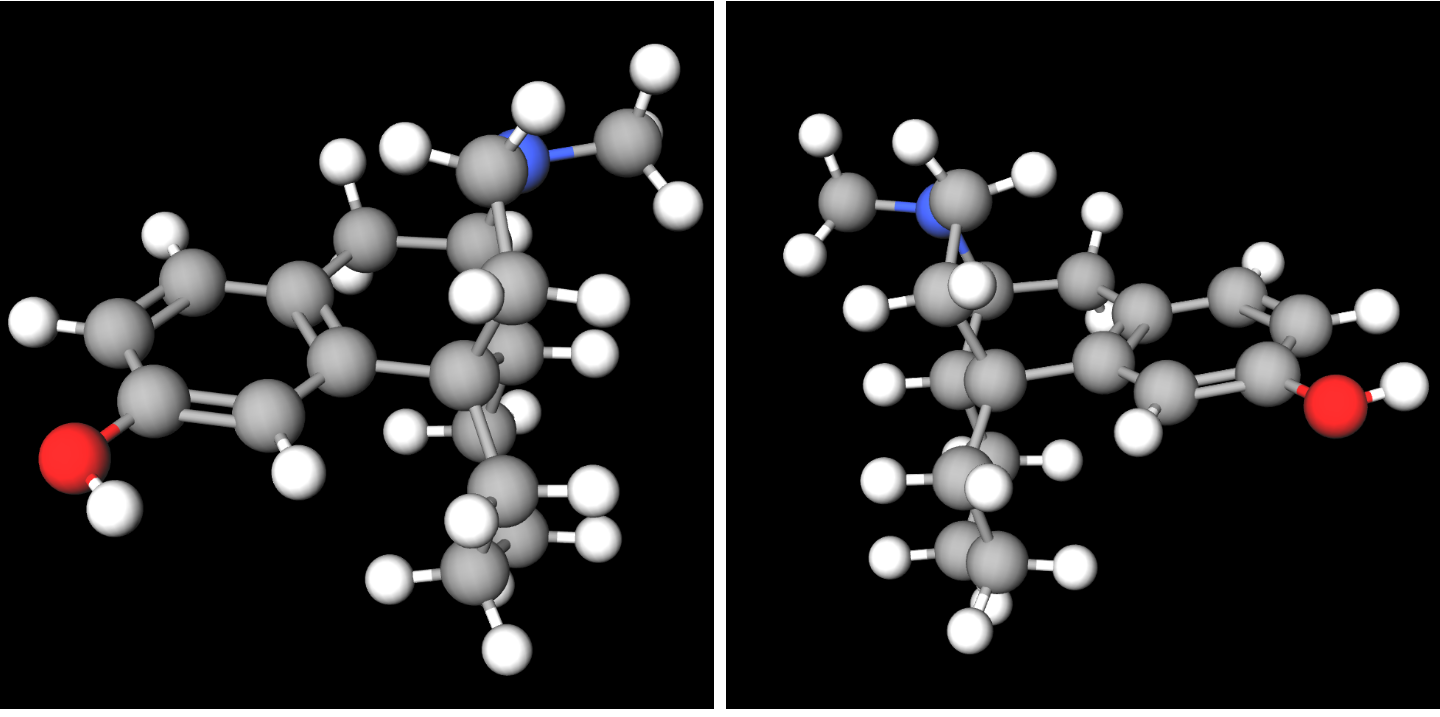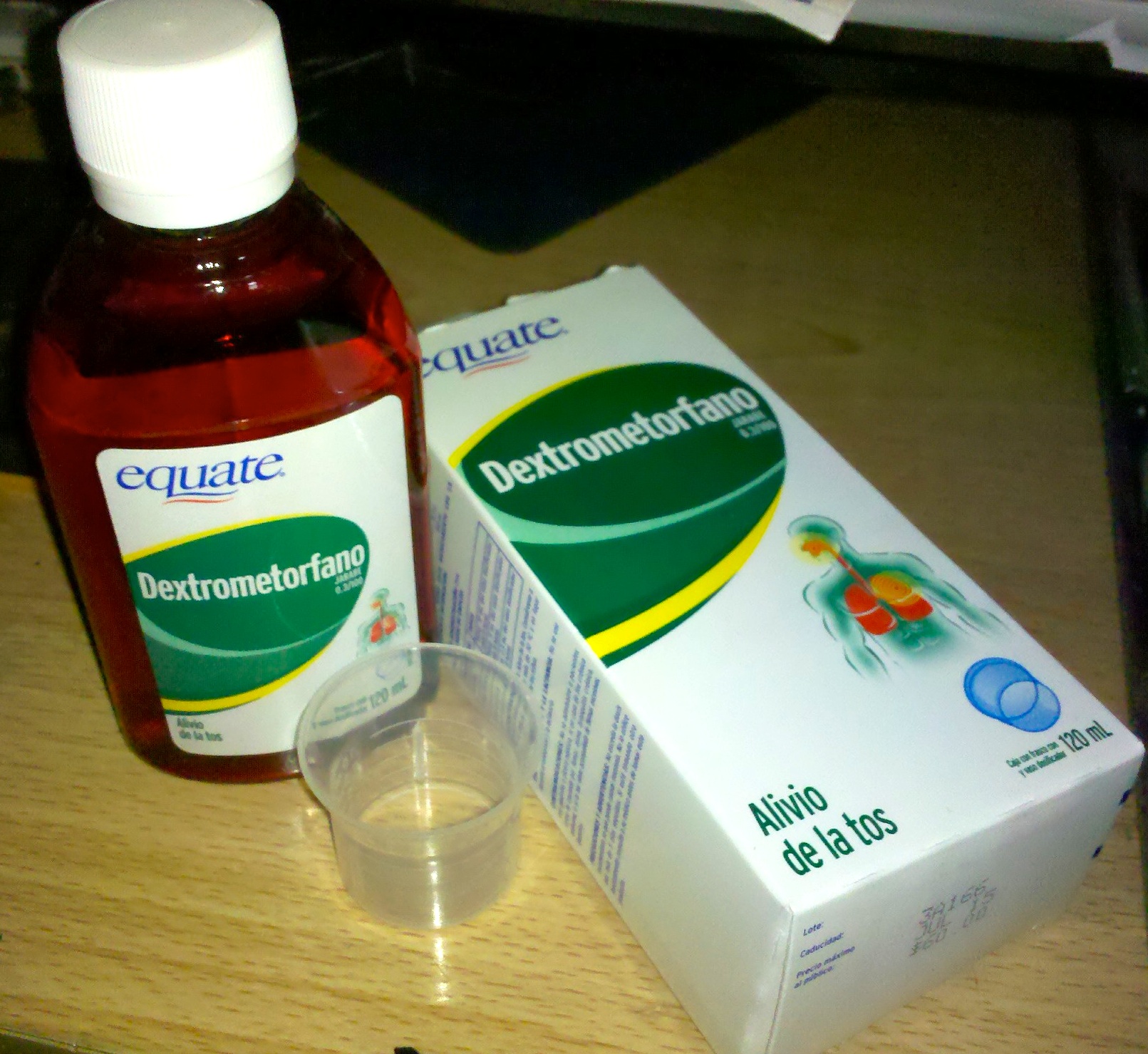|
Dimemorfan
Dimemorfan (INN; JAN dimemorfan phosphate; also known as dimemorphan and 3,17-dimethylmorphinan; brand names Astomin, Dastosirr, and Tusben) is an antitussive (cough suppressant) of the morphinan family that is widely used in Japan and is also marketed in Spain and Italy. It was developed by Yamanouchi Pharmaceutical (now Astellas Pharma) and introduced in Japan in 1975. It was later introduced in Spain in 1981 and Japan in 1985. Side effects Adverse effects include nausea, somnolence, dry mouth, and decreased appetite. Pharmacology Dimemorfan is an analogue of dextromethorphan (DXM) and its active metabolite dextrorphan (DXO), and similarly to them, acts as a potent agonist of the σ1 receptor (Ki = 151 nM). However, unlike DXM and DXO, it does not act significantly as an NMDA receptor antagonist (Ki = 16,978 nM), and for this reason, lacks dissociative effects, thereby having reduced side effects and abuse potential in comparison. Similarly to DXM and DXO, dimemorfan h ... [...More Info...] [...Related Items...] OR: [Wikipedia] [Google] [Baidu] |
Cloperastine
Cloperastine ( INN) or cloperastin, in the forms of cloperastine hydrochloride ( JAN) (brand names Hustazol, Nitossil, Seki) and cloperastine fendizoate, is an antitussive and antihistamine that is marketed as a cough suppressant in Japan, Hong Kong, Brazil and in some European countries. It was first introduced in 1972 in Japan, and then in Italy in 1981. Side effects Adverse effects may include sedation, drowsiness, heartburn, and thickening of bronchial secretions. Pharmacology The precise mechanism of action of cloperastine is not fully clear, but several different biological activities have been identified for the drug, of which include: ligand of the σ1 receptor (Ki = 20 nM) (likely an agonist), GIRK channel blocker (described as "potent"), antihistamine (Ki = 3.8 nM for the H1 receptor), and anticholinergic. It is thought that the latter two properties contribute to side effects, such as sedation and somnolence, while the former two may be involved in or responsible ... [...More Info...] [...Related Items...] OR: [Wikipedia] [Google] [Baidu] |
Tipepidine
Tipepidine (International Nonproprietary Name, INN; also known as tipepidine hibenzate (Japanese Accepted Name, JAN); brand names Asverin, Antupex, Asvelik, Asvex, Bitiodin, Cofdenin A, Hustel, Nodal, and Sotal) is a Organic compound#Synthetic compounds, synthetic, non-opioid antitussive and expectorant of the thiambutene class. It acts as an channel blocker, inhibitor of G protein-coupled inwardly-rectifying potassium channels (GIRKs). The drug was discovered in the 1950s, and was developed in Japan in 1959. It is used as the hibenzate and citrate salts. The usual dose is 20 mg every 4–6 hours. Possible side effects of tipepidine, especially in overdose, may include drowsiness, vertigo, delirium, disorientation, loss of consciousness, and confusion. Tipepidine has been investigated as a potential psychiatric drug. It is being investigated in major depressive disorder, depression, obsessive-compulsive disorder, and attention-deficit hyperactivity disorder (ADHD). Throu ... [...More Info...] [...Related Items...] OR: [Wikipedia] [Google] [Baidu] |
Morphinan
Morphinan is the prototype chemical structure of a large chemical class of psychoactive drugs, consisting of opiate analgesics, cough suppressants, and dissociative hallucinogens, among others. Typical examples include compounds such as morphine, codeine, and dextromethorphan (DXM). Despite related molecular structures, the pharmacological profiles and mechanisms of action between the various types of morphinan substances can vary substantially. They tend to function either as μ-opioid receptor agonists (analgesics), or NMDA receptor antagonists (dissociatives). Structure Morphinan has a phenanthrene core structure with the ''A'' ring remaining aromatic and the ''B'' and ''C'' rings being saturated, and an additional nitrogen-containing, six-membered, saturated ring, the ''D'' ring, being attached to carbons 9 and 13 of the core, and with the nitrogen being at position 17 of the composite. Of the major naturally occurring opiates of the morphinan type—morphine, codeine and ... [...More Info...] [...Related Items...] OR: [Wikipedia] [Google] [Baidu] |
Pentoxyverine
Pentoxyverine ( rINN) or carbetapentane is an antitussive (cough suppressant) commonly used for cough associated with illnesses like common cold. It is sold over-the-counter as Solotuss, or in combination with other medications, especially decongestants. One such product is ''Certuss'', a combination of guaifenesin and pentoxyverine. The drug has been available in the form of drops, suspensions and suppositories. It was formerly available over-the-counter in United States. However, the U.S. Food & Drug Administration ruled in 1987 that pentoxyverine was not generally recognized as safe and effective and ordered it to be removed from the over-the-counter market. Uses The drug is used for the treatment of dry cough associated with conditions such as common cold, bronchitis or sinusitis. Like codeine and other antitussives, it relieves the symptom, but does not heal the illness. No controlled clinical trials regarding the efficiency of pentoxyverine are available. Pharmacologist ... [...More Info...] [...Related Items...] OR: [Wikipedia] [Google] [Baidu] |
Butamirate
Butamirate (or brospamin, trade names Acodeen, Codesin, Pertix, Sinecod, Sinecoden, Sinecodix) is a cough suppressant. It has been marketed in Europe and Mexico, but not in the United States. It is sold in the form of lozenges, syrup, tablets, dragées, or pastilles as the citrate salt. Adverse effects can include nausea, diarrhea, vertigo, and exanthema. Pharmacology A study found it to bind to the cough center in the medulla oblongata, more specifically the dextromethorphan-binding site in guinea pig brain with high affinity. As a 2-(2-diethylaminoethoxy)ethyl ester, it is chemically related to oxeladin and pentoxyverine, which are in the same class. (Oxeladin has an additional ethyl group in its carboxylic acid, pentoxyverine has both ethyl groups of oxeladin replaced by one cyclopentyl in the same place.) File:Oxeladin.png, Oxeladin File:Pentoxyverine skeletal.svg, Pentoxyverine See also * Cough syrup * Noscapine * Codeine; Pholcodine * Dextromethorphan; Dimemorfa ... [...More Info...] [...Related Items...] OR: [Wikipedia] [Google] [Baidu] |
Levorphanol
Levorphanol (brand name Levo-Dromoran) is an opioid medication used to treat moderate to severe pain. It is the levorotatory enantiomer of the compound racemorphan. Its dextrorotatory counterpart is dextrorphan. It was first described in Germany in 1946. The drug has been in medical use in the United States since 1953. Pharmacology Levorphanol acts predominantly as an agonist of the μ-opioid receptor (MOR), but is also an agonist of the δ-opioid receptor (DOR), κ-opioid receptor (KOR), and the nociceptin receptor (NOP), as well as an NMDA receptor antagonist and a serotonin-norepinephrine reuptake inhibitor (SNRI). Levorphanol, similarly to certain other opioids, also acts as a glycine receptor antagonist and GABA receptor antagonist at very high concentrations. As per the World Health Organization, levorphanol is a step 3 opioid and is considered eight times more potent than morphine at the MOR (2 mg levorphanol is equivalent to 15 mg morphine). Relative t ... [...More Info...] [...Related Items...] OR: [Wikipedia] [Google] [Baidu] |
Racemorphan
Racemorphan, or morphanol, is the racemic mixture of the two stereoisomers of 17-methylmorphinan-3-ol, each with differing pharmacology and effects: * Dextrorphan an antitussive and dissociative hallucinogen (NMDA receptor antagonist) * Levorphanol an opioid analgesic It analgesic activity is intermediate between Dextrorphan and Levorphanol. Racemorphan itself is under international control per the Single Convention on Narcotic Drugs 1961 and is therefore listed as a Schedule II Narcotic controlled substance in the US Controlled Substances Act 1970; it has an ACSCN of 9733 and in 2014 it had an aggregate annual manufacturing quota of zero. The salts in use are hydrobromide (free base conversion ratio 0.741), hydrochloride (0.876), and tartrate (0.632). See also * Levallorphan * Methorphan * Morphinan * Cyclorphan * Cough syrup * Noscapine * Codeine; Pholcodine * Dextromethorphan; Dimemorfan * Dextrorphan Dextrorphan (DXO) is a psychoactive drug of the morph ... [...More Info...] [...Related Items...] OR: [Wikipedia] [Google] [Baidu] |
Noscapine
Noscapine, also known as narcotine, nectodon, nospen, anarcotine and (archaic) opiane, is a benzylisoquinoline alkaloid of the phthalideisoquinoline structural subgroup, which has been isolated from numerous species of the family Papaveraceae (poppy family). It lacks effects associated with opioids such as sedation, euphoria, or analgesia (pain-relief) and lacks addictive potential. Noscapine is primarily used for its antitussive (cough-suppressing) effects. Medical uses Noscapine is often used as an antitussive medication. A 2012 Dutch guideline, however, does not recommend its use for acute coughing. Side effects * Nausea * Vomiting * Loss of coordination * Hallucinations (auditory and visual) * Loss of sexual drive * Swelling of prostate * Loss of appetite * Dilated pupils * Increased heart rate * Shaking and muscle spasms * Chest pain * Increased alertness * Increased wakefulness * Loss of stereoscopic vision Interactions Noscapine can increase the effects o ... [...More Info...] [...Related Items...] OR: [Wikipedia] [Google] [Baidu] |
Dextrorphan
Dextrorphan (DXO) is a psychoactive drug of the morphinan class which acts as an antitussive or cough suppressant and in high doses a dissociative hallucinogen. It is the dextrorotatory enantiomer of racemorphan; the levorotatory enantiomer is levorphanol. Dextrorphan is produced by O-demethylation of dextromethorphan by CYP2D6. Dextrorphan is an NMDA antagonist and contributes to the psychoactive effects of dextromethorphan. Pharmacology Pharmacodynamics The pharmacology of dextrorphan is similar to that of dextromethorphan (DXM). However, dextrorphan is much more potent as an NMDA receptor antagonist and much less active as a serotonin reuptake inhibitor, but retains DXM's activity as a norepinephrine reuptake inhibitor. It also has more affinity for the opioid receptors than dextromethorphan, significantly so at high doses. Pharmacokinetics Dextrorphan has a notably longer elimination half-life than its parent compound, and therefore has a tendency to accumulate ... [...More Info...] [...Related Items...] OR: [Wikipedia] [Google] [Baidu] |
Abuse Potential
Substance misuse, also known as drug misuse or, in older vernacular, substance abuse, is the use of a drug in amounts or by methods that are harmful to the individual or others. It is a form of substance-related disorder, differing definitions of drug misuse are used in public health, medical, and criminal justice contexts. In some cases, criminal or anti-social behavior occurs when some persons are under the influence of a drug, and may result in long-term personality changes in individuals which may also occur. In addition to possible physical, social, and psychological harm, the use of some drugs may also lead to criminal penalties, although these vary widely depending on the local jurisdiction.. Drugs most often associated with this term include alcohol, amphetamines, barbiturates, benzodiazepines, cannabis, cocaine, hallucinogens, methaqualone, and opioids. The exact cause of substance abuse is sometimes clear, but there are two predominant theories: either a genetic pre ... [...More Info...] [...Related Items...] OR: [Wikipedia] [Google] [Baidu] |
Dextromethorphan
Dextromethorphan, sold under the brand name Robitussin among others, is a cough suppressant used in many cough and Common cold, cold medicines. In 2022, the US Food and Drug Administration (FDA) approved the combination dextromethorphan/bupropion to serve as a rapid-acting antidepressant in people with major depressive disorder. It is in the morphinan class of medications with sedative, dissociative, and stimulant properties (at lower doses). Dextromethorphan does not have a significant Affinity (pharmacology), affinity for the Μ-opioid receptor, mu-opioid receptor activity typical of morphinan compounds and exerts its therapeutic effects through several other receptors. In its pure form, dextromethorphan occurs as a white powder. When exceeding approved dosages, dextromethorphan acts as a dissociative, dissociative hallucinogen. It has multiple mechanism of action, mechanisms of action, including actions as a nonselective serotonin reuptake inhibitor and a sigma-1 receptor ag ... [...More Info...] [...Related Items...] OR: [Wikipedia] [Google] [Baidu] |
Pholcodine
Pholcodine is an opioid cough suppressant (antitussive). It helps suppress unproductive coughs and also has a mild sedative effect, but has little or no analgesic effects. It is also known as morpholinylethylmorphine and homocodeine. Pholcodine is found in certain cough lozenges, and more commonly as an oral solution, typically 5 mg / 5 ml. Adult dosage is 5-10 ml up to 3-4 times daily. Pholcodine now largely replaces the previously more common codeine linctus, as it has a much lower potential for dependence. Pholcodine has been widely used as an antitussive agent but by 2023 concerns over its association with anaphylaxis in some circumstances meant that it has been withdrawn from sale in many territories. Pholcodine is not prescribed in the United States where it is classed as a Schedule I drug, the most highly controlled drug category. Following the conclusion of a review of post-marketing safety data by the MHRA, all pholcodine-containing medicines are being recalled ... [...More Info...] [...Related Items...] OR: [Wikipedia] [Google] [Baidu] |


